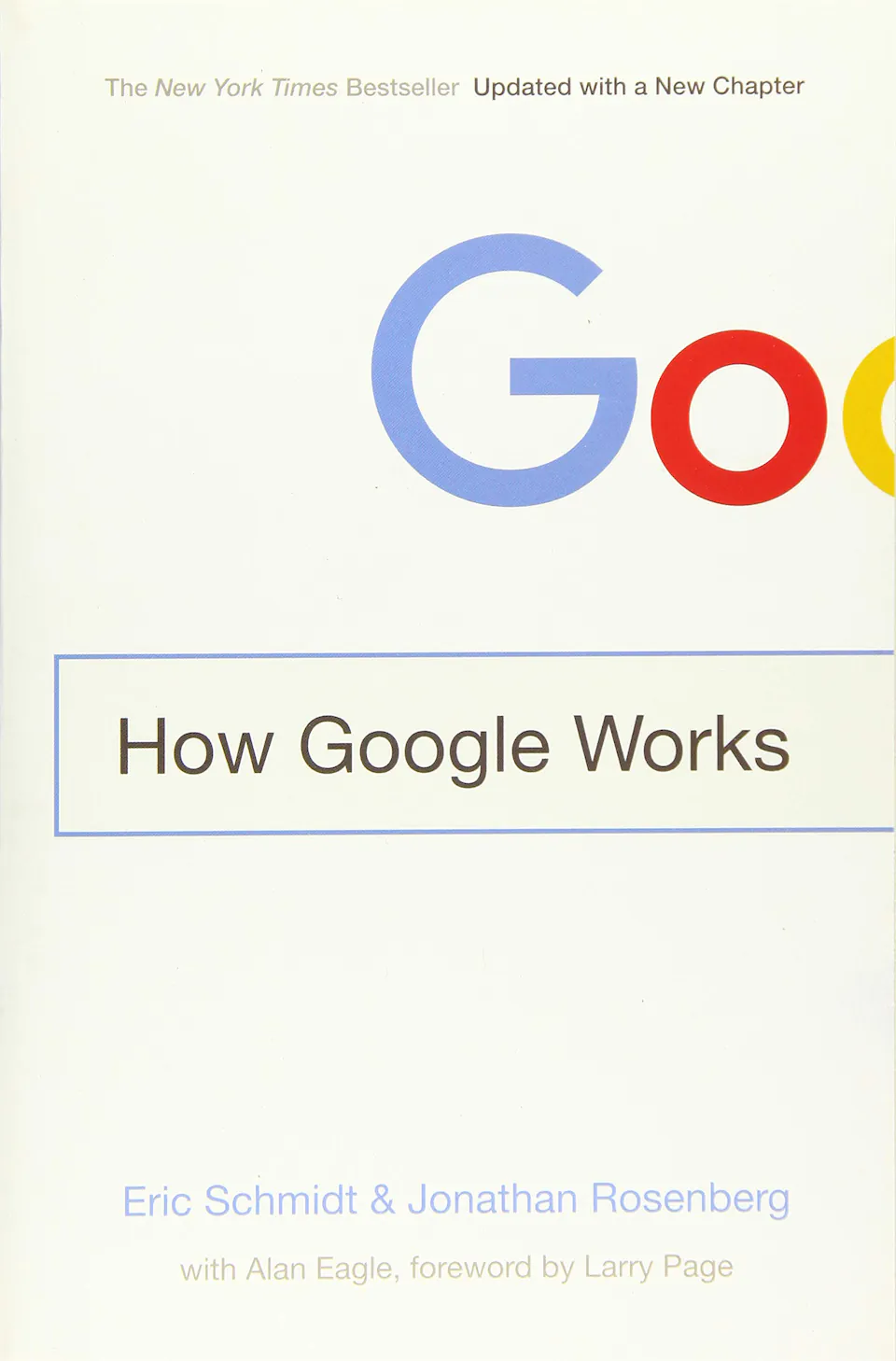How Google Works
by Eric Schmidt, Jonathan Rosenberg
Added:
Jan 2, 2015
Book Description
Google Executive Chairman and ex-CEO Eric Schmidt and former SVP of Products Jonathan Rosenberg came to Google over a decade ago as proven technology executives. At the time, the company was already well-known for doing things differently, reflecting the visionary-and frequently contrarian-principles of founders Larry Page and Sergey Brin. If Eric and Jonathan were going to succeed, they realized they would have to relearn everything they thought they knew about management and business.
Today, Google is a global icon that regularly pushes the boundaries of innovation in a variety of fields. How Google Works is an entertaining, page-turning primer containing lessons that Eric and Jonathan learned as they helped build the company. The authors explain how technology has shifted the balance of power from companies to consumers, and that the only way to succeed in this ever-changing landscape is to create superior products and attract a new breed of multifaceted employees whom Eric and Jonathan dub “smart creatives.”
Covering topics including corporate culture, strategy, talent, decision-making, communication, innovation, and dealing with disruption, the authors illustrate management maxims (“Consensus requires dissension,” “Exile knaves but fight for divas,” “Think 10X, not 10%”) with numerous insider anecdotes from Google’s history, many of which are shared here for the first time.
In an era when everything is speeding up, the best way for businesses to succeed is to attract smart-creative people and give them an environment where they can thrive at scale. How Google Works explains how to do just that.
Notes & Highlights
On 10x thinking…
That’s why one of Eric and Larry’s challenges to engineers and product managers in Google product reviews was always “you aren’t thinking big enough.” In the Internet Century, with infinite information, reach, and computing power, global scale is available to just about everyone. But too many people are stuck in the old, limited mindset. “You aren’t thinking big enough” — later replaced by the Larry Page directive to “think 10X” — helps fix that. It encompasses the art of the possible… and the impossible.
The obvious benefit of thinking big is that it gives smart creatives much more freedom. It removes constraints and spurs creativity. Astro Teller, the head of GoogleX, notes that if you want to create a car that gets 10 percent better mileage, you just have to tweak the current design, but if you want to get one that gets five hundred miles per gallon, you need to start over. Just the thought process—How would I start over?—can spur ideas that were previously not considered.
Competitive Questions…
- How would a very smart, well-capitalized competitor attack the company’s core business?
- How could it take advantage of digital platforms to exploit weaknesses or skim off the most profitable customer segments?
- What is the company doing to disrupt its own business?
- Is cannibalization or revenue loss a frequent reason to kill off potential innovation?
- Is there an opportunity to build a platform that can offer increasing returns and value as usage grows?
- Do company leaders use your products regularly?
- Do they love them?
- Would they give them to a spouse as a gift? (This obviously isn’t applicable in a lot of cases, but it’s a powerful thought experiment.)
- Do your customers love your products? Or are they locked in by other factors that might evaporate in the future? If they weren’t locked in at all, what would happen?
- (Interesting corollary to this question: If you forced your product people to make it easy for customers to ditch your product for a competitor’s, how would they react? Could they make your products so great that customers want to stay, even if they don’t have to?)
- When you go through your pipeline of upcoming new major products and features, what percentage of them are built on unique technical insights?
- How many product people are on the senior leadership team?
- Does the company aggressively reward and promote the people who have the biggest impact on creating excellent products?
- Is hiring a top priority at the C-suite level?
- Do top executives actually spend time on it?
- Among your stronger employees, how many see themselves at the company in three years?
- How many would leave for a 10 percent raise at another company?
- Do your decision-making processes lead to the best decisions, or the most acceptable ones?
- How much freedom do employees have?
- If there is someone who is truly innovative, does that person have the freedom to act on his ideas, regardless of his level?
- Are decisions on new ideas based on product excellence, or profit?
- Who does better in the company, information hoarders or routers?
- Do silos prevent the free flow of information and people?
Get a copy
